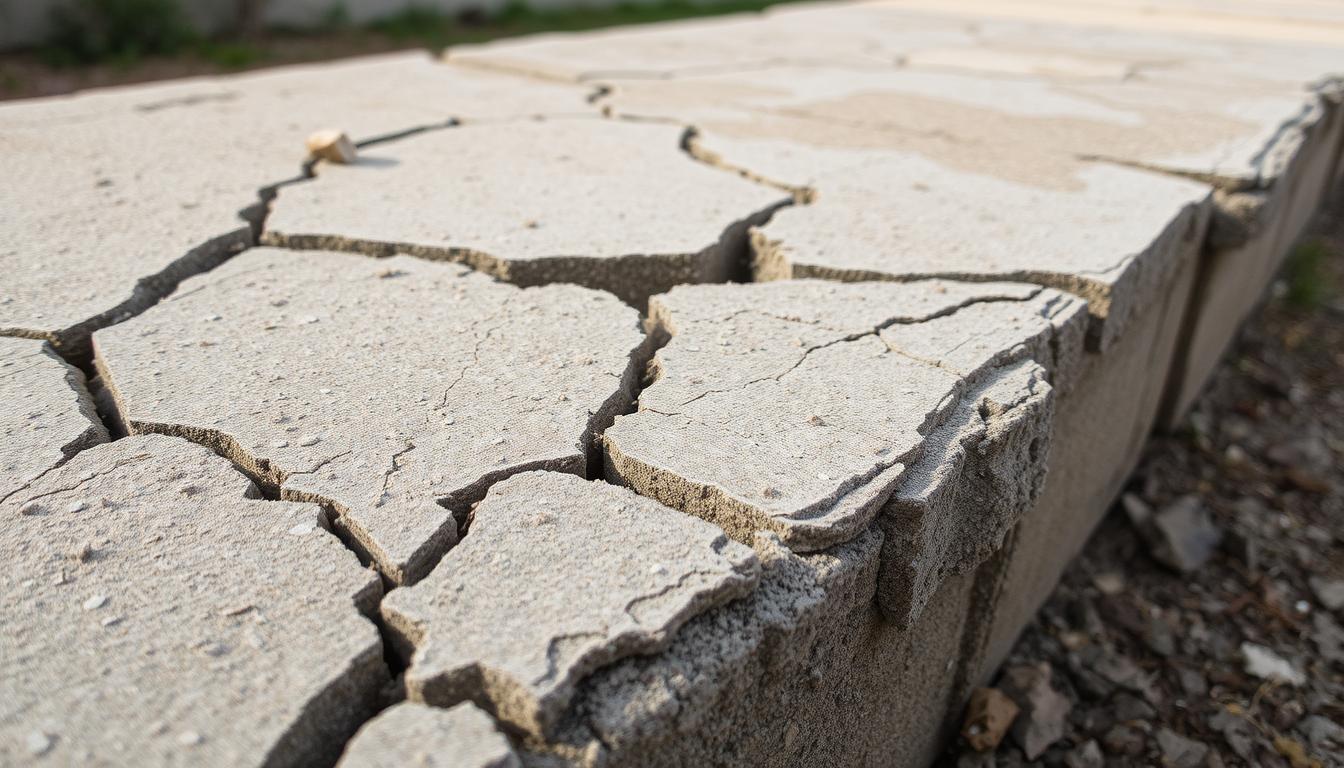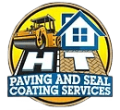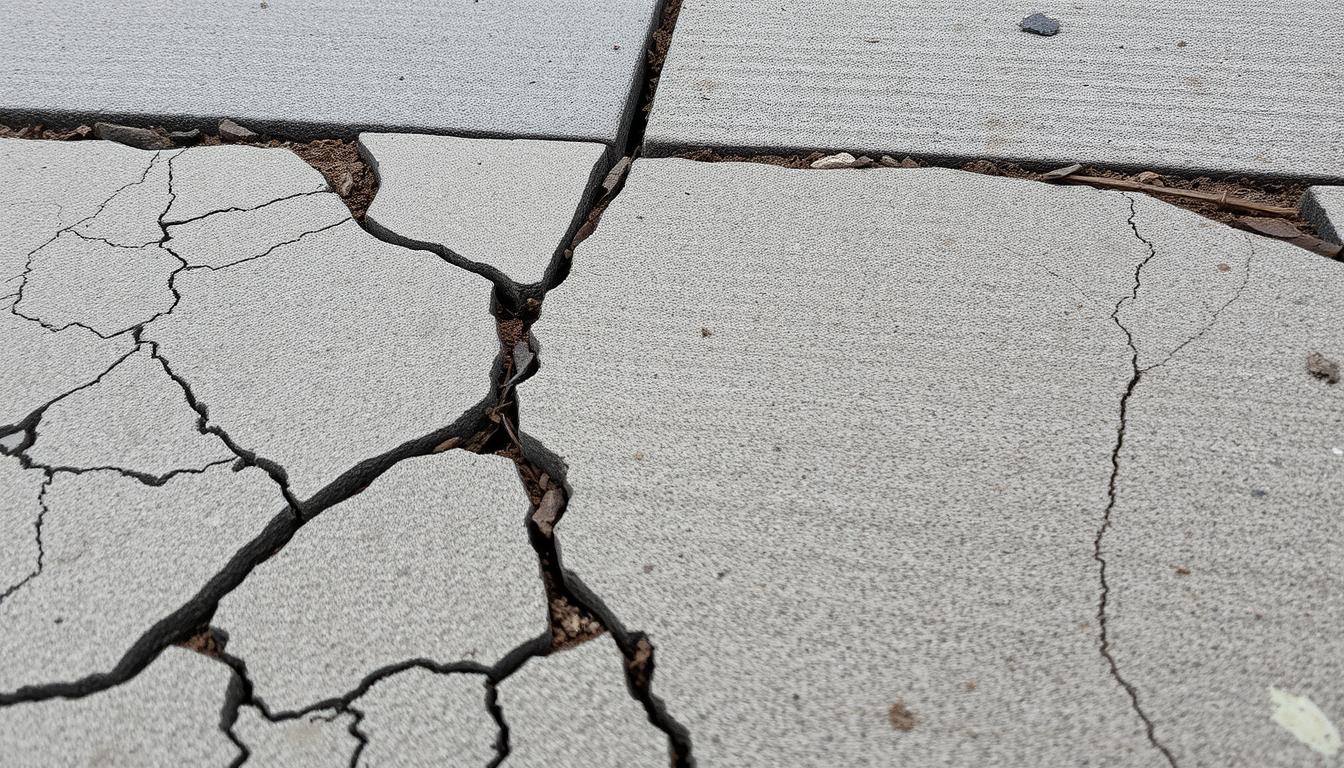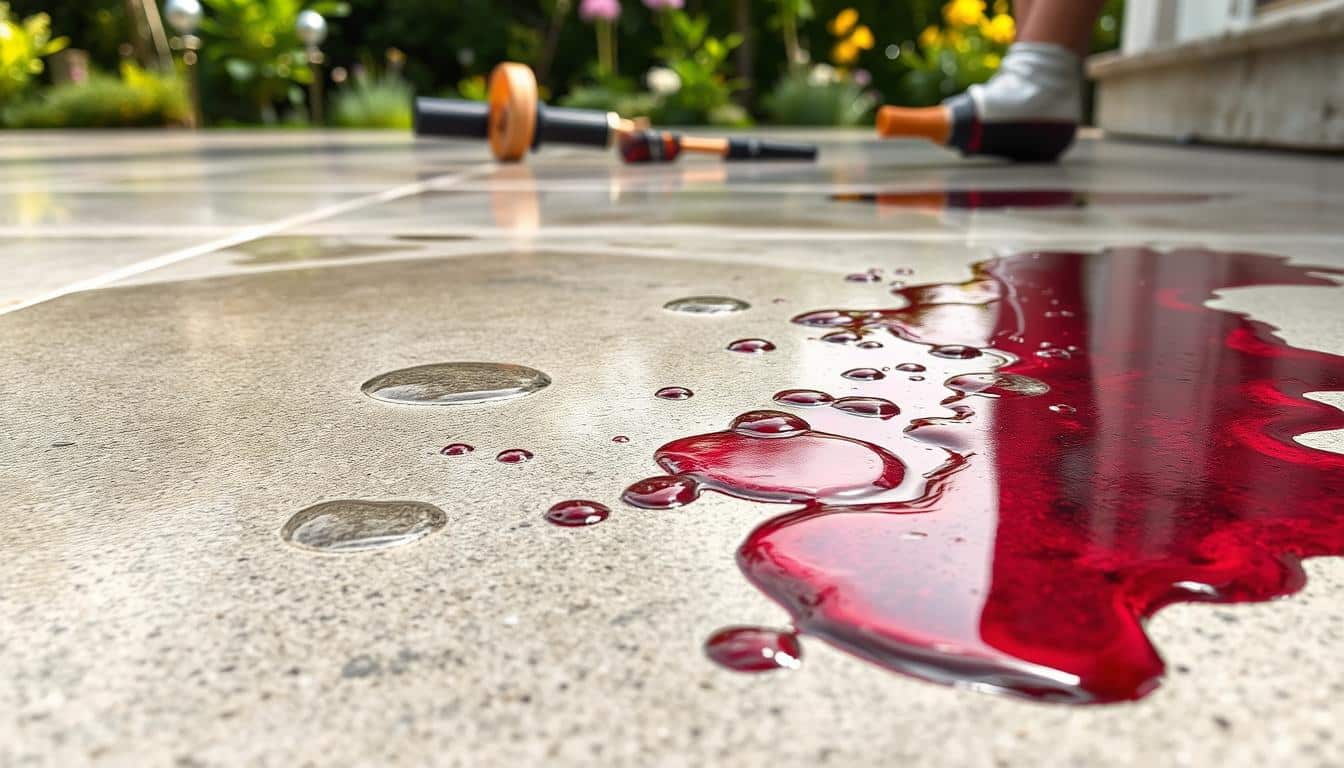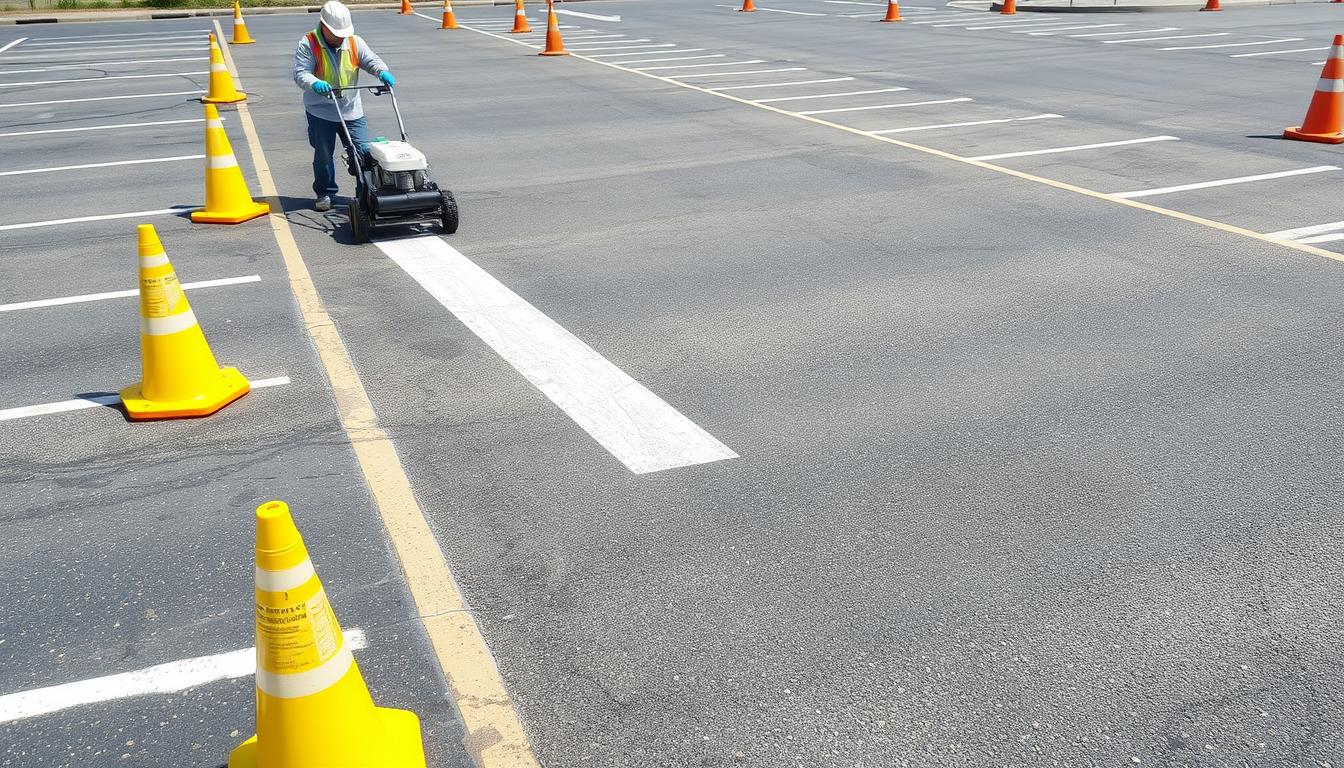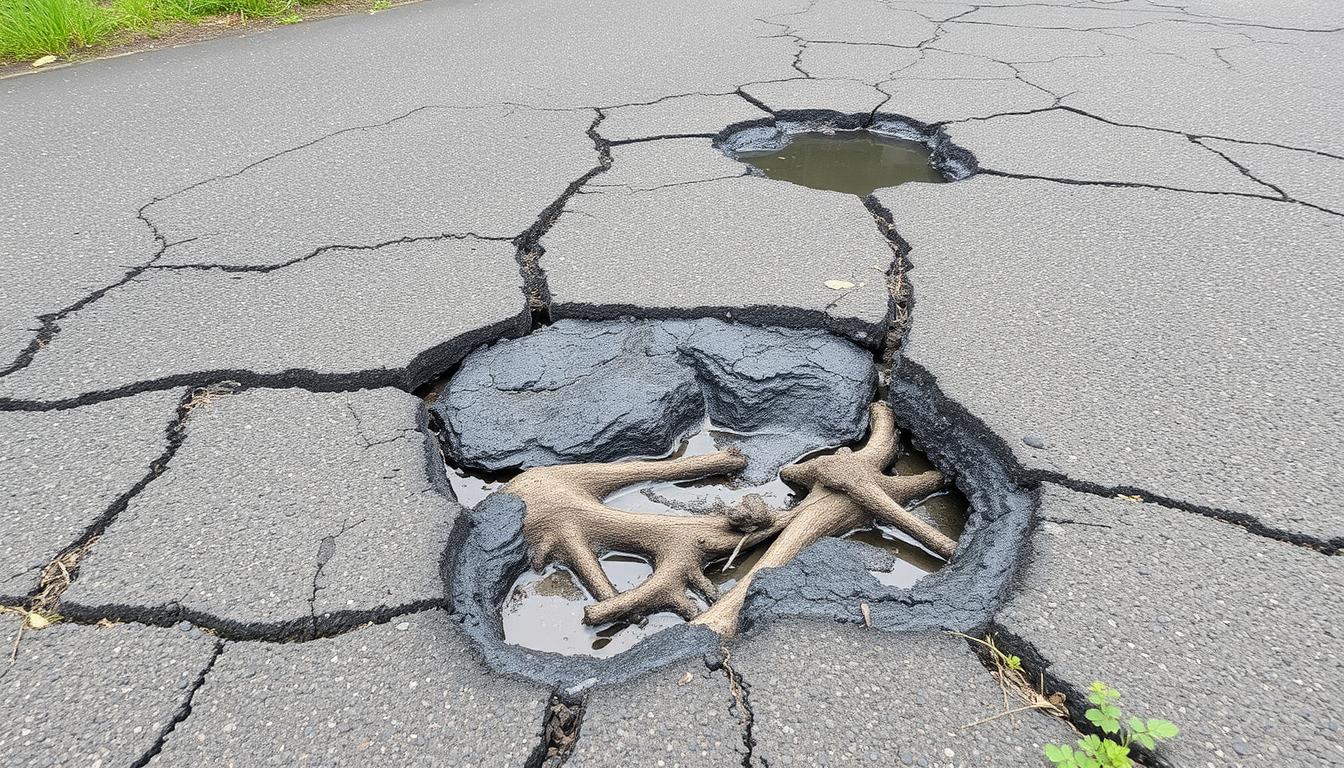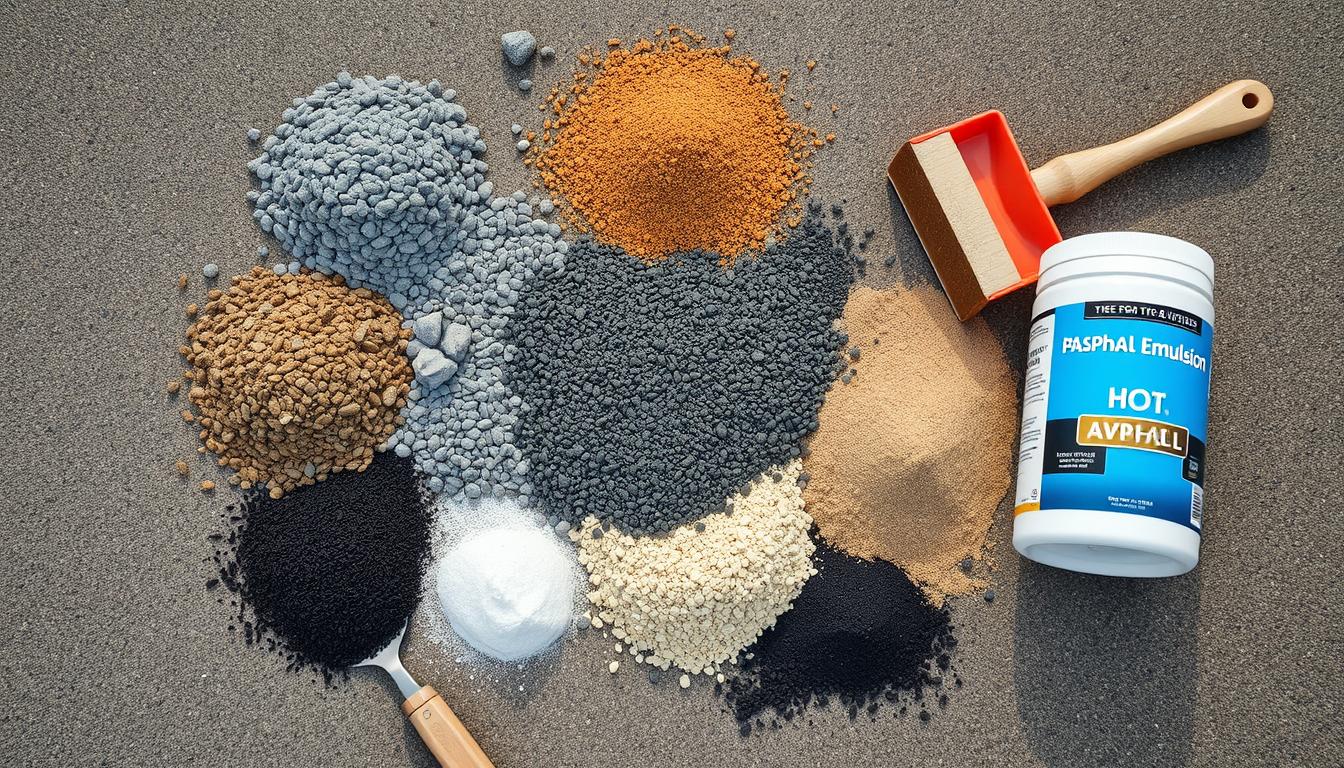Ever wondered what the signs of deteriorating concrete are? Or how much damage you might be missing? The signs of failing concrete can sneak up on you, leading to expensive fixes and safety risks. Knowing the signs of concrete decay is key for keeping both homes and businesses in top shape.
Deterioration can show up in many ways, like cracks, color changes, and uneven surfaces. These signs can weaken your structures. Spotting these warning signs of concrete degradation early can save you money and keep your concrete lasting longer.
Key Takeaways
- Approximately 70% of concrete deterioration issues arise from environmental stressors.
- Ignoring concrete cracks can increase repair costs by 25% over time.
- Visible spalling can lead to a 60% loss in surface strength if not addressed.
- Uneven surfaces can increase the risk of trips and falls by up to 30%.
- Concrete settling may result in repair costs 40% higher if left unaddressed early.
- Regular inspections reduce long-term repair costs by about 15% annually.
- Understanding the signs of failing concrete is essential for maintaining structural integrity.
Understanding Concrete Deterioration
Concrete deterioration means the quality and strength of concrete structures are going down. It’s important to know what causes this, like harsh weather. Checking for wear and tear regularly helps fix problems before they get worse.
What Does Deterioration Mean?
Deterioration is when concrete structures lose their strength and durability over time. Things like freeze-thaw cycles and bad drainage play a big role. In cold areas, you might see signs of wear and tear within a few years.
For example, not curing concrete properly can weaken it by up to 30%. This makes it more prone to damage like surface scaling.
Common Causes of Concrete Deterioration
Many things can cause concrete to deteriorate. Using de-icing chemicals is a big problem, as they speed up damage. Also, not enough air in the concrete mix makes it more vulnerable to freeze-thaw damage.
Moisture getting into the concrete can cause discoloration, which is a sign of deeper problems. Spotting these signs early is key to keeping concrete strong for a long time.

Visible Cracks: A Warning Sign
Cracks in concrete surfaces are clear signs of decay. It’s important to know the types of cracks to spot deterioration early. Different cracks include hairline, spider web, and large fissures. Knowing what each means helps homeowners take the right steps.
Types of Cracks to Look For
Hairline cracks are usually small and appear first. They are often due to normal settling. But, if they get wider, it could mean bigger problems.
Horizontal cracks are a big worry. They show walls are under too much pressure and are linked to 90% of severe foundation issues. About 30% of homes have cracks from poor soil compaction.
When to Worry About Cracks
Cracks over 1/4 inch wide are a big concern. They often point to serious structural issues, like foundation problems. Look out for signs like uneven floors, sticking doors, and water leaks.
Ignoring cracks can lead to expensive repairs later. It’s important to address them early to avoid bigger problems.
Surface Scaling and Spalling
Concrete surfaces face many environmental challenges. Surface scaling and spalling are big issues. It’s key to understand these problems to keep structures strong.
Surface scaling happens when the top concrete layer peels off, showing the aggregate below. Freeze-thaw cycles and harmful chemicals make it worse. Spotting damage early helps fix it before it gets bad.
What Is Surface Scaling?
Surface scaling damages concrete, making it less durable. Moisture gets in and freezes, causing flakes and chips. Freezing and thawing cycles make it worse, more so in cold places.
De-icing salts speed up damage by causing internal reactions. Moisture and poor sealing make spalling more likely. This is a big concern.
Identifying Spalling in Concrete Structures
Spalling shows clear warning signs that need quick action. Look for discoloration, pitting, and blisters. Up to 40% of spalled areas have visible cracks, showing deeper problems.
Spalling can greatly reduce a structure’s strength by up to 30%. Regular maintenance and better drainage can help prevent spalling. This keeps concrete structures strong for longer.
Discoloration and Staining
Discoloration and staining on concrete surfaces are signs of problems. It’s important to know what causes these issues. This helps keep concrete structures safe and durable.
Causes of Concrete Discoloration
Water damage is a big reason for concrete discoloration. This can come from rain, irrigation, or leaks in plumbing. Moisture can cause chemical reactions and grow mold or algae, more so in humid or shaded spots.
Chemicals like de-icing salts and acids also cause stains. A white powder called efflorescence forms on the surface. It’s made of soluble salts moving through the concrete and can weaken it by 15-25%. About 30% of concrete surfaces show some discoloration or staining.
How Stains Impact Structural Integrity
Stains might not seem like a big deal at first. But ignoring them can lead to serious problems later. Water getting into the concrete can increase the risk of cracking and erosion by 20-30%.
Poor drainage, like water pooling, can make things worse by 10% each year. Regular maintenance, like sealing, can reduce these problems by up to 40%. Fixing stains early can save a lot of money, avoiding repairs that could cost over $1,000.
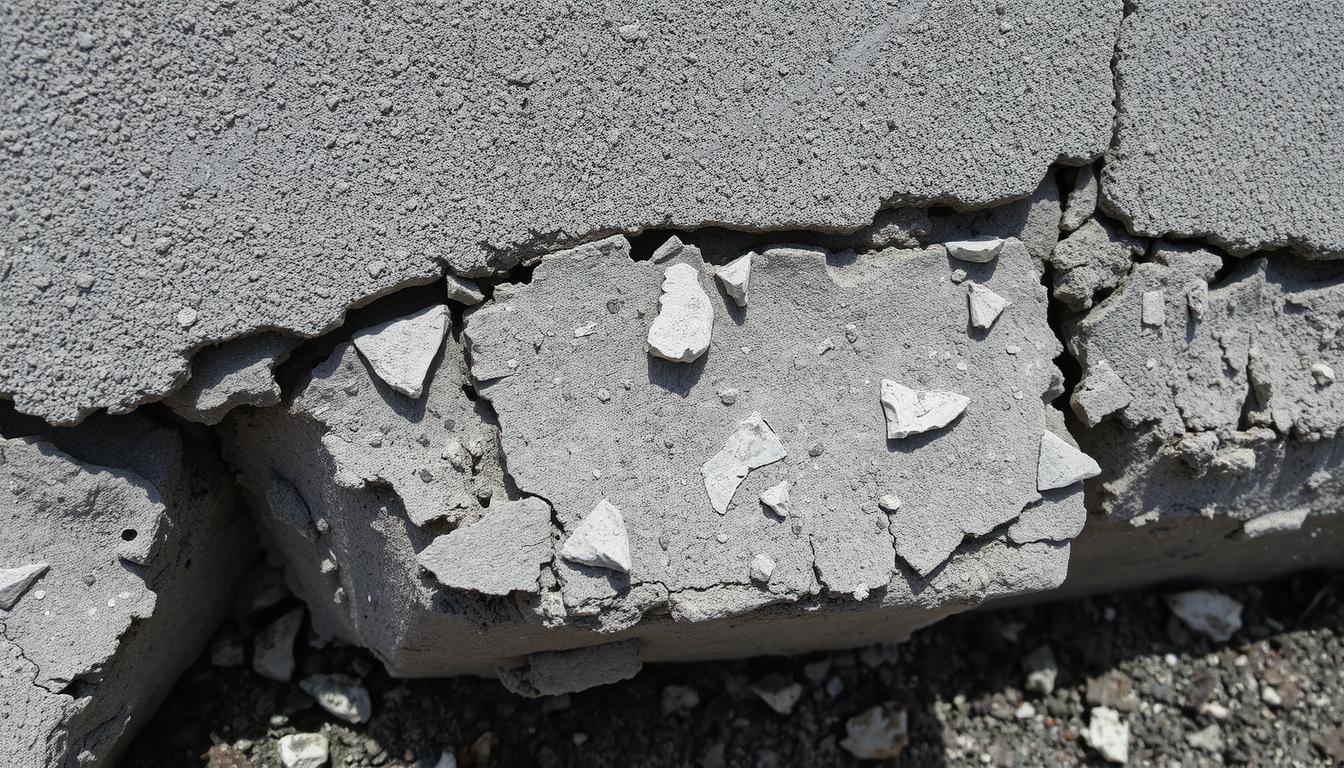
Uneven Surfaces and Settling
Concrete is used in over 70% of modern buildings. Uneven surfaces often signal concrete failure. These can be due to poor foundation, soil movement, or drainage problems. Spotting these signs is vital for safety and structure.
Recognizing Uneven Concrete Areas
Uneven sidewalks and walkways are tripping hazards, common in cities. Look for depressions or lifted areas to spot failing concrete. Poor drainage and tree roots are common causes, affecting 30% and 15% of sidewalks, respectively.
Regular checks can catch these problems early. This prevents more serious damage.
Consequences of Settling
Ignoring concrete settling can lead to cracks and more damage, raising repair costs. Uneven concrete causes over 50,000 injuries each year from slips and falls. Freeze-thaw cycles damage 20% of concrete, making maintenance essential.
Homes in cities often settle due to poor compaction, affecting 20% in the first five years. Quick fixes improve safety and keep property values up, avoiding 5-10% value drops.
Water Damage and Drainage Issues
Water is key in eroding and damaging concrete. It’s vital to spot early signs of concrete failure. Warning signs of water damage can prevent expensive repairs later.
Look for pooling water, rust-colored stains, or efflorescence. These signs show moisture is harming your concrete surfaces.
Signs of Water Damage in Concrete
Discoloration on concrete, like white efflorescence or dark patches, is a warning. These signs mean moisture is getting in, causing cracks and spalling. A musty smell or mold inside also points to moisture problems.
Regular checks can find low spots in concrete that hold water. This increases the risk of more damage.
Importance of Proper Drainage
Good drainage keeps concrete structures strong. Use proper grading and install French drains or catch basins to avoid water pooling. This prevents serious damage.
Managing moisture extends your concrete’s life and stops steel reinforcement corrosion. Taking action early saves money and prevents further damage.
Mold and Mildew Growth
Mold and mildew are big problems in concrete, mainly where there’s too much moisture. High humidity and bad air flow make things worse. Owners need to watch out to stop mold and keep everyone safe.
Conditions Favoring Mold Growth
Mold loves moisture in concrete. Dark, wet spots are perfect for spores to grow. Leaks, condensation, or bad drainage make these areas even worse. Knowing this helps stop mold in concrete.
Health Risks Associated with Mold
Mold in concrete can hurt your health, mainly your breathing. People might get allergies or serious lung problems. Keeping indoor air clean is key in business places. Fixing mold fast keeps tenants healthy and owners safe.
Age and Wear of Concrete
As concrete ages, it faces various forms of deterioration. This affects its durability and structure. The age of concrete is key to understanding its performance, as it’s exposed to moisture and temperature changes.
How Age Affects Concrete Durability
Old concrete shows signs of wear that can harm building safety. Factors like freeze-thaw cycles, chemical exposure, and moisture loss cause cracks and spalling. Watching for these signs helps avoid bigger problems.
Ignoring early signs can lead to higher repair costs. Timely action by Concrete Repair services can prevent more damage.
Replacing vs. Repairing Old Concrete
Property owners often debate whether to replace or repair old concrete. The decision depends on the damage, budget, and space use. Minor cracks might need just repairs, while major damage might require a full replacement.
Making the right choice can save money and improve looks. It helps keep the property’s value and durability.
Importance of Regular Maintenance
Keeping concrete in good shape is vital. It helps prevent damage and makes structures last longer. This is true for both homes and businesses.
By taking care of the concrete early, you ensure safety and aesthetics. It keeps properties looking great and safe for everyone.
Preventive Measures for Longevity
Preventive steps are key for concrete care. Regular checks can spot small problems before they get big. This saves money later.
A surface seal keeps moisture out, preventing damage. Fixing problems early can cut costs by up to 60%. This shows how important it is to act fast.
Why Maintenance Matters for Concrete
Ignoring maintenance can lead to big problems and high repair costs. Freeze-thaw cycles can damage concrete a lot, causing 75% of surface issues in cold places. Fixing things quickly can make concrete last 30 years longer and increase property value.
Regular maintenance keeps concrete safe and reliable. It’s a smart choice for any property owner.
Choosing the Right Professionals
It’s key to pick experienced pros for concrete upkeep to keep your structures safe and lasting. HT Paving and Seal Coating Services are your go-to for this. They have certified experts who know how to tackle concrete problems. They offer custom solutions that boost your structures’ durability.
Why Work with HT Paving and Seal Coating Services?
HT Paving and Seal Coating Services are all about keeping your concrete in top shape. They focus on maintenance and repairs to stop big problems. Their team checks your concrete often to catch issues early.
Ignoring concrete upkeep can lead to big troubles. About 10% of concrete structures can start to crumble in just 10 to 15 years. But, with certified experts, you can avoid these issues.
Benefits of Hiring Certified Experts
Choosing certified concrete experts means you get the best care for your concrete. They use the latest methods and materials for fixing problems. This can save you a lot of money on future repairs.
These pros use advanced tech for detailed inspections and quick fixes. This can make your concrete last 20 to 30% longer. It also helps avoid problems with uneven surfaces.
Contact HT Paving for Inspection and Assessment
If you see signs of concrete damage, it’s time to act fast. HT Paving and Seal Coating Services is here to help in the Bay Area, California. We do detailed inspections to find problems early, keeping your concrete safe for longer.
How to Reach Us
Call HT Paving at (415) 774-6424 to book an assessment or learn more about our services. Our family-owned business focuses on making you happy and safe. Don’t let small problems become big expenses. Contact us today!
